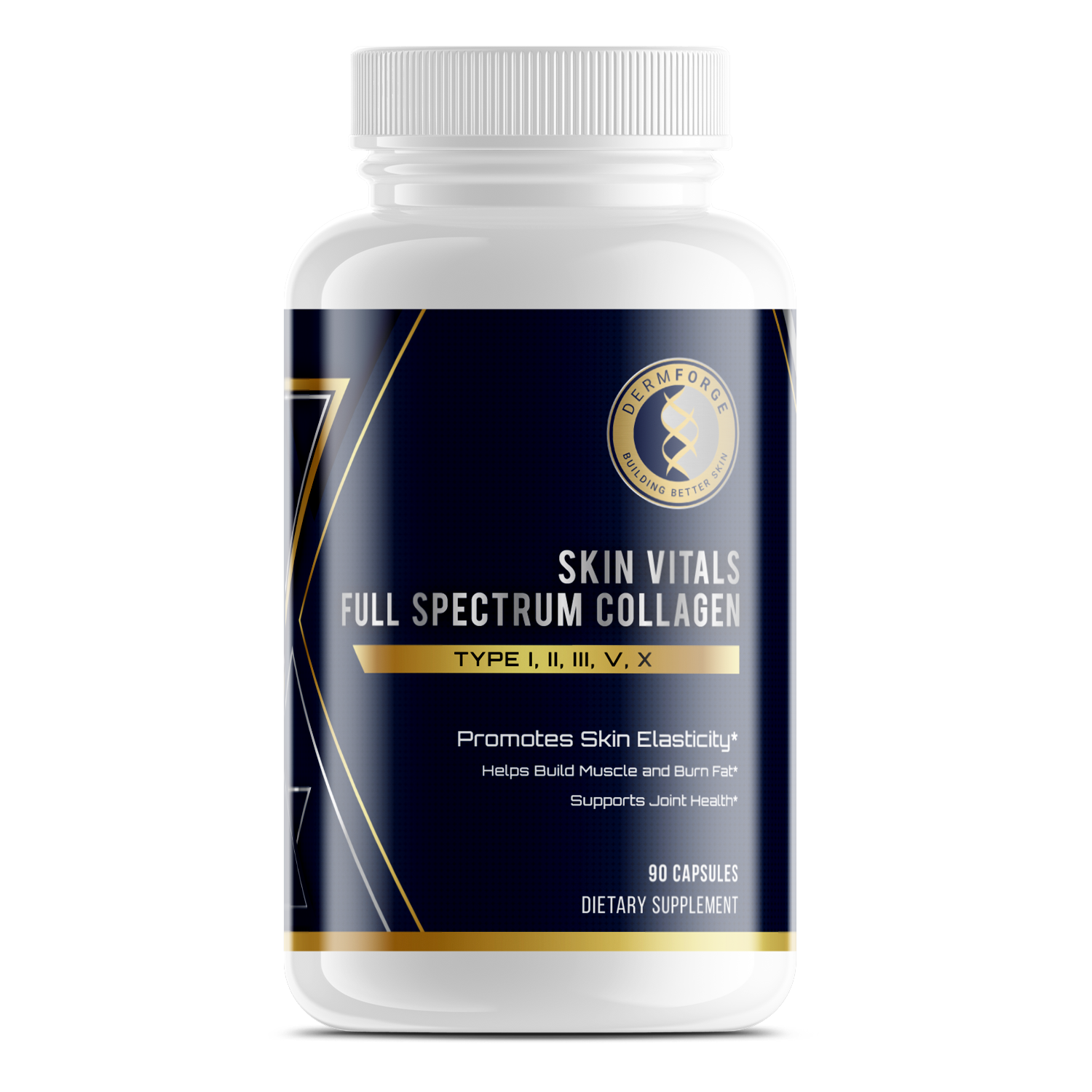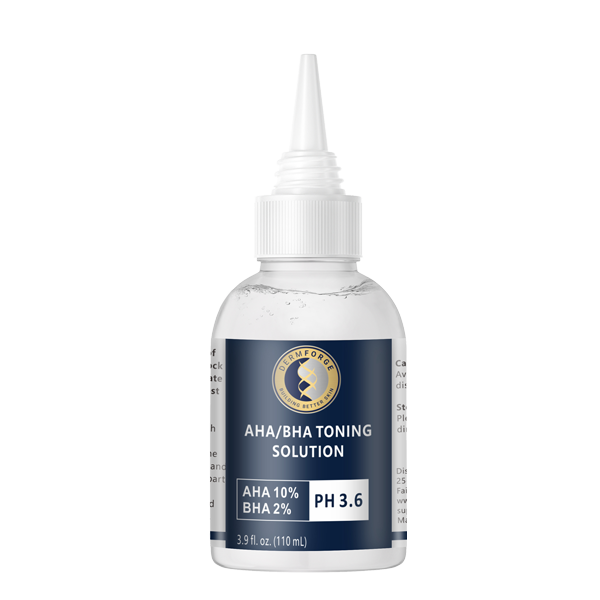Neck wrinkles are a common concern for many people, as they can be both unsightly and a sign of aging. Understanding the causes of neck wrinkles and implementing effective solutions is key to maintaining a youthful appearance. In this article, we will delve into the science behind skin aging, explore why the neck area is prone to wrinkles, discuss common causes, and provide prevention and treatment options for combating this issue.
Understanding Neck Wrinkles
Skin aging is a natural process that occurs as we get older. It is influenced by both intrinsic and extrinsic factors. Intrinsic factors include genetics and hormonal changes, which affect the quality and elasticity of the skin. Extrinsic factors, on the other hand, are largely environmental and lifestyle-related.
As we age, collagen and elastin production, proteins responsible for skin firmness and elasticity, decreases. This leads to the gradual loss of skin's ability to bounce back, resulting in sagging and wrinkles. In addition, exposure to the sun’s ultraviolet (UV) radiation accelerates the breakdown of collagen and elastin fibers, hastening the aging process.
Why the Neck Area is Prone to Wrinkles
Due to its delicate and thin skin, the neck area is particularly susceptible to wrinkles. Unlike the face, the neck has fewer oil glands, which results in reduced moisture retention and less natural protection against environmental stressors. Additionally, the neck muscles support the weight of the head, leading to repetitive movements that contribute to the formation of wrinkles.
Furthermore, the neck is often an overlooked area in skincare routines, leading to neglect and increased vulnerability to the signs of aging. Lack of proper hydration and sun protection in this area can exacerbate the development of wrinkles and fine lines. Extending skincare practices beyond the face to include the neck and décolletage is essential to maintaining a more youthful appearance.
Common Causes of Neck Wrinkles
One of the primary causes of neck wrinkles is prolonged sun exposure. The sun’s ultraviolet (UV) radiation damages the collagen and elastin fibers in the skin, leading to reduced elasticity and the formation of wrinkles. To protect your neck from sun damage, always apply a broad-spectrum sunscreen with a high SPF and avoid prolonged exposure to the sun, especially during peak hours.
Additionally, wearing protective clothing such as hats and scarves can provide extra defense against harmful UV rays. Seeking shade and using umbrellas outdoors can also help minimize sun exposure and reduce the risk of developing neck wrinkles.
The Role of Genetics in Neck Wrinkles
Genetics also play a significant role in determining how prone individuals are to developing neck wrinkles. If your parents or close relatives have experienced premature aging or have visible neck wrinkles, you may be genetically predisposed to the same condition. While you cannot change your genetics, you can still take preventive measures to delay the onset of neck wrinkles.
Understanding your genetic predisposition can empower you to make informed decisions about your skincare routine. Consulting with a dermatologist can help you develop a personalized plan that addresses your concerns and effectively incorporates targeted treatments to combat neck wrinkles.
Lifestyle Factors Contributing to Neck Wrinkles
Lifestyle choices such as smoking, poor nutrition, and inadequate hydration can accelerate the formation of neck wrinkles. Smoking damages the skin’s collagen and elastin fibers and restricts blood flow, reducing oxygen and nutrient supply to the skin. Eating a balanced diet rich in antioxidants and staying hydrated can help nourish and protect the skin from within.
Incorporating regular exercise into your routine can also improve blood circulation, promote healthier skin, and potentially reduce the appearance of neck wrinkles. Prioritizing self-care practices like getting enough sleep and managing stress levels can further support overall skin health and minimize the impact of lifestyle factors on premature aging.
Prevention of Neck Wrinkles
Below, we'll discuss various ways to prevent neck wrinkles, including the importance of sun protection, proper nutrition and hydration, and maintaining good posture.
Importance of Sun Protection
To prevent neck wrinkles, it is crucial to prioritize sun protection. In addition to using sunscreen, remember to wear protective clothing, such as wide-brimmed hats or scarves, and seek shade whenever possible. Additionally, using skincare products containing antioxidants and moisturizing ingredients can help fortify the skin's natural barrier and reduce the likelihood of wrinkles.
Exposure to the sun's harmful UV rays is one of the primary causes of premature skin aging, including wrinkle development. UV radiation can break down collagen and elastin fibers in the skin, leading to sagging and wrinkling. By incorporating sun protection measures into your daily routine, you not only prevent neck wrinkles but also reduce the risk of skin cancer and other sun-related damage.
Nutrition and Hydration for Skin Health
A well-balanced diet plays a significant role in maintaining healthy skin. Ensure that your diet includes foods rich in vitamins A, C, and E and essential fatty acids. These nutrients help support collagen production and protect against free radicals. Additionally, keeping your body adequately hydrated by drinking plenty of water can improve the skin's elasticity and minimize the appearance of wrinkles.

Collagen, a protein that provides structure to the skin, relies on vitamin C for its synthesis. Including citrus fruits, bell peppers, and leafy greens in your diet can boost your vitamin C intake and support collagen formation, ultimately contributing to smoother and more youthful-looking skin. Furthermore, essential fatty acids in foods like salmon, walnuts, and flaxseeds help maintain the skin's lipid barrier, preventing moisture loss and enhancing skin hydration.
The Impact of Good Posture
Believe it or not, your posture can affect the formation of neck wrinkles. Poor posture, such as constantly looking down at electronic devices or slouching, can contribute to developing "tech neck" wrinkles. Practicing good posture by keeping your head aligned with your spine and maintaining a neutral position helps prevent neck wrinkles and has numerous other health benefits.
Proper posture benefits the musculoskeletal system and plays a role in skin health. When you maintain good posture, you reduce the repetitive creasing and folding of the skin on your neck, preventing wrinkles over time. You can promote overall well-being and maintain a youthful appearance by being mindful of your posture and adjusting to support a straight and aligned spine.
Treatment Options for Neck Wrinkles
Below, we'll examine different ways to reduce neck wrinkles, including topical products, clinic treatments, and exercises.
Topical Treatments and Their Effectiveness
Several topical treatments are available that claim to reduce neck wrinkles. These include creams and serums containing ingredients like retinol, hyaluronic acid, peptides, and antioxidants. While these products can temporarily improve wrinkles’ appearance, it is important to note that no topical treatment can completely reverse the natural aging process. Consult a dermatologist to find the most suitable options for your needs.
When it comes to topical treatments, it's important to understand how they work. Retinol, for example, is a derivative of vitamin A that helps stimulate collagen production and improve skin texture. Hyaluronic acid, on the other hand, is a powerful hydrating ingredient that can plump up the skin and reduce the appearance of fine lines. Peptides are amino acids that can help stimulate collagen synthesis, while antioxidants protect the skin from free radicals that contribute to premature aging.
While these topical treatments can provide some benefits, managing your expectations is important. They can help soften the appearance of neck wrinkles and improve overall skin quality, but they cannot eliminate deep wrinkles or sagging skin. For more significant and long-lasting results, in-office procedures may be recommended.
Clinical Procedures for Neck Wrinkles
Clinical procedures may be recommended for individuals seeking more dramatic and long-lasting results. These can include skin resurfacing treatments such as laser therapy, chemical peels, and injectables like Botox or dermal fillers. A qualified professional should always perform these procedures and tailor them to meet your goals and concerns.
Laser therapy is a popular option for treating neck wrinkles as it can stimulate collagen production and improve skin texture. It delivers concentrated beams of light to the skin, promoting the growth of new, healthier cells. Chemical peels, on the other hand, involve the application of a chemical solution to the skin, which exfoliates the outer layer and reveals smoother, younger-looking skin underneath.
Injectables like Botox and dermal fillers are commonly used to address neck wrinkles. Botox temporarily paralyzes the muscles responsible for causing wrinkles, while dermal fillers add volume to the skin, filling in deep lines and creases. These procedures can provide noticeable results, but consulting with a qualified professional is important to determine the best approach for your unique needs.
The Role of Exercise in Treating Neck Wrinkles
Regular physical exercise improves overall health and can also benefit your skin. Engaging in activities that promote blood circulation, such as yoga, Pilates, or specific facial exercises, can help strengthen the neck muscles and improve the tone and appearance of the skin. However, it is important to note that exercise alone may not eliminate neck wrinkles.
Facial exercises, in particular, can help tighten and tone the muscles in the neck area, reducing the appearance of sagging skin and wrinkles. These exercises involve various movements and stretches that target the muscles supporting the neck and jawline. Incorporating these exercises into your skincare routine can help improve muscle strength and enhance the overall appearance of your neck.
While exercise can be beneficial, it's important to remember that it should be combined with other treatment options for optimal results. A comprehensive approach that includes sun protection, proper nutrition, good posture, and appropriate topical treatments or in-office procedures will yield the best outcomes in the fight against neck wrinkles.
Conclusion
Understanding the causes of neck wrinkles is essential in developing effective preventative and treatment strategies. By protecting your skin from sun exposure, adopting a healthy lifestyle, and considering various treatment options, you can combat neck wrinkles and maintain a youthful appearance.
Remember, the best results come from a comprehensive approach that combines sun protection, proper nutrition, good posture, and the appropriate use of topical treatments or in-office procedures. Embrace these practices and take control of your skin’s health to combat neck wrinkles effectively and preserve a youthful, smooth neck for years to come.
Looking to tackle those neck wrinkles and regain a youthful appearance? Visit DermForge’s website for your skincare solutions. Explore our products, including high-dose collagen supplements, to help revive your skin. Visit our website today to take the first step toward a smoother, more radiant appearance.






